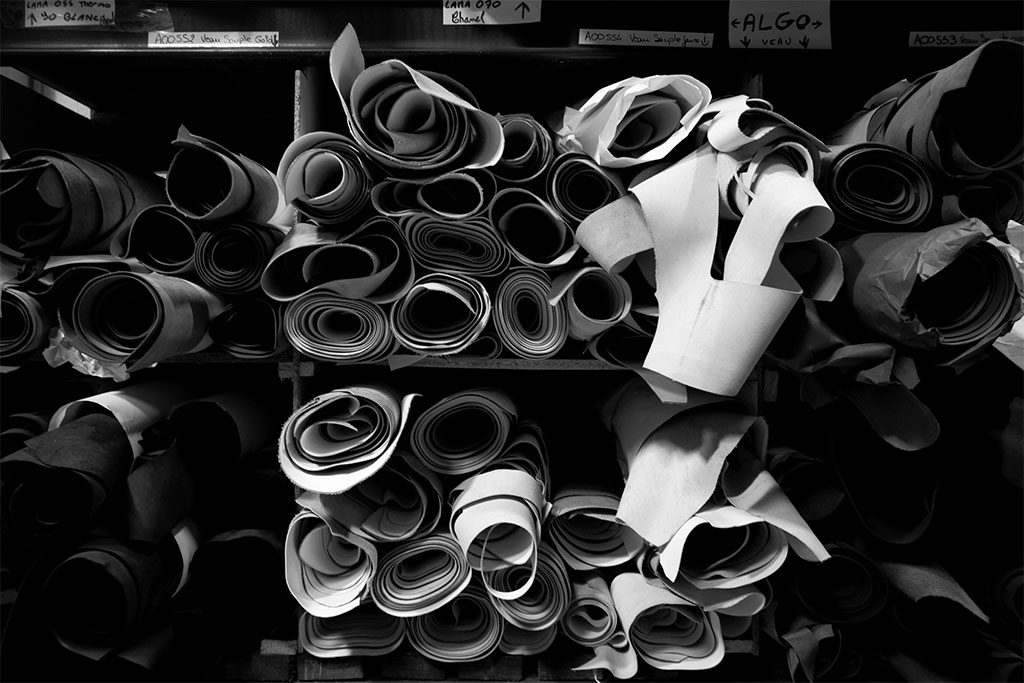革製品の歴史
実際、革製品の歴史は長く、人間は狩りで得た獲物の皮を使って革を作り、利用してきました。
古代エジプト、古代ギリシャで、ホモサピエンスは革を使って寒さから身を守り、傷を負わないように革を身に纏い、革を使って道具や食料を運んでいました。ルネッサンス期になると、王立の革工房が作られ、革製品は豊かさの象徴としての別の側面を持つようになります。
19世紀、先見の明がある革職人たち、先駆者たちが経済的な発展の可能性を見い出します。交通手段の進歩、つまり、長距離旅行の発展に伴い、人々は革の旅行鞄を買い求めるようになります。そして、革製品は贅沢の象徴となりました。
完璧な技
数世紀の間、多くの優れた革製品の職人たちのおかげで、技術が進歩し、真の匠の技が確立していきました。
身に付ける革製品になるまでに非常に多くの工程が必要とされます。技術を要する繊細な手と革を見分ける目が不可欠です。一つの革製品が出来上がるまでに、15人以上の職人の手が加わります。
生きている素材、つまり、腐りやすい皮はまず、不純物が取り除かれ、塩に付けられ、乾かされます。そして、選別され、鞣され、柔軟性や色彩が施される段階になって初めて革製品に相応しい革へとなっていきます。

高級革製品へ
革という素材に手を加えるためには技術と能力が必要です。まず、デザイナーの創造力が求められます。そしてパターンを起こす職人、一番美しい革の部分を見極めながら裁断する職人の手が加わります。次に革のパーツを合わせるためには、縫製の高い技術が必要とされます。最後にコバの仕上げ、コバ塗り加工など、高い技術を要する仕上げの段階に至ります。高品質の素材から高い技術で作られる美しいもの、オリジナリティ溢れるものを常に求める美意識の高い人々を満足させるためには、最後の仕上げ段階が特に重要となります。
先史時代から今日まで、革職人の仕事は社会の変遷に対応してきました。先人の技術が情熱を持って代々引き継がれ、絶え間なく改善されてきたことで、革製品が芸術の閾にまで達したということができるでしょう。

